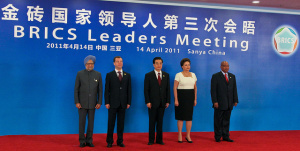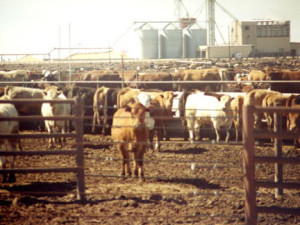Stuart Jeanne Bramhall's Blog: The Most Revolutionary Act , page 1378
October 27, 2013
World Change Starts in Your Neighborhood
Unless someone like you cares a whole awful lot, nothing is going to get better. It’s not – Dr Seuss
Through the re-localization movement people are taking back power from corporations and reconnecting with nature and other human beings. An inspiring film from Australia describes how to make your own block a Super Hood.
We’re building our own Super Hoods here in New Plymouth (check us out at our Transition New Plymouth Facebook page). I started one in my street by liberating my front lawn to plant potatoes and silver beet (chard).
If and when summer arrives, we’re going to close the road down for a street party.
Photo credit Manawatu Harvest Festival


October 26, 2013
I will not be pushed, filed, stamped, indexed, briefed, debriefed or numbered
The Prisoner – starring Patrick McGoohan as Number 6
The Prisoner is a prophetic Owellian series from 1967 about dissident and whistleblowing spies who are punished by being sent to a remote village from which they can never escape. The late creator, producer, and star Patrick McGoohan shows astonishing insight into the coming New World Order, indoctrination and mind control, and the sociopathic intelligence industrial complex.
The Village was modeled after a real place in Scotland where dissident British spies were sent during World War II. The 17 episodes are still under copyright but can be purchased for $1.99 each from iTunes
At the time, we called this surrealism. Oh, to be young and naive again.
The following clip refers to a “perfect blueprint for world order”:
photo credit: marsmet545 via photopin cc
Originally published in Veterans Today


October 24, 2013
Fast Food Restaurants Cost Taxpayers Nearly $8 Billion
Why Are We Subsidizing Profitable Corporations?
Over the past few days, the corporate media has been trumpeting September’s “low” 7.2% unemployment rate. For the most part, the mainstream media fails to report that joblessness has only decreased 0.1% since August. Or that 20,000 of the 148,000 jobs created were temporary jobs. They also neglect to mention that most new jobs since the 2008 economic crisis don’t pay enough to live on. Which means that US taxpayers subsidize minimum wage workers to the tune of $7.8 billion a year. Given the current $17 trillion government debt, this seems like a major chunk of change.
In 2012, half of US jobs paid under $33,000 annually. Most of these minimum wage jobs are in America’s fast food restaurants, where employees struggle to get by on $7.25 an hour.
According to a recent University of Berkeley/University of Illinois study, 52% of fast food workers rely on federal programs like Medicaid, food stamps, the Earned Income Tax Credit, and Temporary Assistance for Needy Families to provide for their children. This is due partly to poverty-level wages and partly to heavy reliance by fast food outlets on part time workers (under 30 hours per week). MacDonald’s et all are reluctant to take on full time employees owing to the new requirement (under Obamacare) that they provide health insurance for full time workers. .
Something seems terribly wrong here. MacDonald’s, Subway, Burger King, Wendy’s, Domino’s Pizza are all highly profitable corporations. So why is the US taxpayer bailing them out by providing health care, food stamps, and other federal benefits for their employees and their families?
Work Week Shrinking Under Obamacare
Under Obamacare, employers are only required to provide health insurance if workers put in more than 30 hours a week. Investors.com has been tracking employers that are either cutting work hours or only hiring part time workers to reduce their obligation under the new law.
When employers cut back their full time workers, Obamacare shifts responsibility to the federal government (through expanded Medicaid programs and premium subsidies) to provide health coverage for minimum wage workers. Thus in addition to subsidizing MacDonald’s, Subway, Burger King, Wendy’s, Domino’s Pizza, the taxpayer is also subsidizing highly profitable insurance companies like Aetna, United Health Care, and Blue Cross/Blue Shield.
The Government Accountability Office reports that Obamacare will increase the federal deficit by $6.2 trillion. $709 billion of this will fund Medicaid expansion (from 2014-2023). The rest will take the form of direct subsidies to insurance companies.
Sarah Palin Describes Obamacare as Corporatism
In a recent oped on Breitbart, former Alaska governor Sarah Palin describes Obamacare as “a sort of corporatism, which is the collusion of big government with big business.” While she and I disagree on many issues, that we definitely agree on.
She goes on to predict that the exorbitant costs will cause a breakdown in the US health care system. When this happens, she believes, Americans will clamor for the government to enact a single payer system which excludes parasitic health insurance companies from the health care equation.
I sure hope she’s right. Palin makes the unsubstantiated claims that single payer funding will lead to death panels and higher costs. There are no death panels in Medicare, which is a single payer system. Moreover Medicare, which was enacted in 1965, enables senior citizens to access health care far more cheaply and efficiently than private insurance does.
Nor are there death panels in the dozens of other countries that publicly fund health care. Even more importantly, they all pay about half what the US does for medical services. Seems to me it’s high time for the US to catch up with the rest of the civilized world. Except for the US, all other industrialized countries guarantee that all citizens, regardless of income, have the right to see a doctor when they’re sick.
photo credit: caribb via photopin cc
Originally published in Veterans Today


October 22, 2013
Teen Pregnancy: Do Your Part
Skyrocketing population growth is one of the most serious threats to the fragile biosphere that supports human existence. Fertility rates in most of the industrialized world have slowed dramatically over the last decade. Except for the US. Thanks to high rates of teen pregnancy (the highest in the developed world), US fertility rates remain higher than many other countries.*
In July, under a US District Court order, the FDA authorized pharmacies to sell Plan B One Step tablets over-the-counter (without prescription) without age restriction.** Plan B One-Step, also known as the “morning after pill,” is designed for women who, for a variety of reasons, engage in unprotected intercourse. Thanks to the new rules, all women of reproductive age should be be able to find the tablets on the shelf of their local drug store, like any other product. Unfortunately many pharmacies still aren’t compliant with FDA regulations and either keep Plan B tablets behind the counter or in locked cabinets. As evidenced in the following video:
As part of a national pressure campaign, The Reproductive Justice Reporting Project of the Media Consortium is asking members of the public to help by completing the “Where’s Your Plan B?” survey.
The next time you visit your local pharmacy, please complete the form provided at Where’s Your Plan B?
If you have a smartphone, you can fill the form out while you are still at the drug store. If not, print the form out, fill it out at the store, and transfer the details to the online form when you get home.***
*Fertility rates by country (World Bank)
US – 1.89 children per woman
China – 1.58 children per woman
Italy – 1.41 children per woman
Japan – 1.39 children per woman
Germany – 1.36 children per woman
Spain – 1.36 children per woman
**Studies show that difficulty accessing birth control (such as Plan B One Step) is the primary reason why American teenagers experience the highest rate of unplanned pregnancies in the industrialized world.
***You don’t have to be a woman of reproductive age to complete the form. Overpopulation isn’t a woman’s issue – it affects all of us.
photo credit: cobalt123 via photopin cc


October 21, 2013
The Global Hemp Renaissance

Taranaki hemp farmer John Earney with organic enthusiast HRH Prince Charles
Where the people lead, the leaders will follow – Ghandi
Nothing honors Ghandi’s vision more stunningly than the citizens movement to legalize marijuana and industrial hemp. At the time former Congressman Ron Paul introduced his 2011 Industrial Hemp Farming Act Bill, five states (North Dakota, Hawaii, Kentucky, Maine, Oregon, California, Montana, West Virginia and Vermont) had enacted laws authorizing industrial hemp cultivation. Without Obama’s support, the bill died in committee. Fast forward to November 2012, when Colorado voters passed Amendment 64 to legalize hemp cultivation.Last week the Denver Post reported on the Colorado farmer who made history by harvesting the first commercial hemp crop in the US in 56 years.
Growing industrial hemp is still illegal under the 1970 federal Controlled Substances Act. The law makes no sense whatsoever – scientifically, environmentally, or economically. First the hemp plant contains no psychoactive substances. Although genetically related to marijuana, hemp contains only trace amounts of THC, the compound that gets weed users high. Secondly hemp-based paper, textiles, rope, construction materials and even plastics are the tried and true low tech alternative to modern synthetics based on fossil fuels. Thirdly the US is the world’s largest importer of hemp (from Canada and China), for use in construction, clothing, paper, rope, pressed oil, and cooking.
Given Obama’s response back in August to the 34 states that have decriminalized marijuana use, he’s not expected to go after Colorado hemp farmers. On August 29, 2013, the president notified 94 US attorneys that states with recreational and medical marijuana (and hemp) laws can now let people use it, grow it under license, and purchase it from retail facilities — so long as possession by minors is prohibited and it doesn’t end up on federal property or in the hands of gangs and criminal enterprises.
New Zealand’s Hemp Renaissance
In New Zealand, hemp cultivation has been legal, under license, since 2006. We have two hemp farms here in Taranaki. I presently serve as secretary of the Douglas farm, run by John Earney, owner of Avonstour Rare Breeds organic farm.
It’s the goal of New Plymouth businessman Greg Flavall to create the word’s first hemp industrial village here in Taranaki. It would center around a $500,000 hemp processing facility that would use a decorticator and process hemp from all over New Zealand. Flavell envisions hemp as a major export industry to meet growing world demand. Once the long fibers are extracted, the rest of the plant can be used for pressed oil, flour, animal bedding, garden mulch, paper making, and food.

Greg Flavell - www.hemptechnologies.co.nz
Flavall, co-founder of Hemp Technologies, is a builder specialized in constructing homes made of hempcrete – a hemp-lime compound that is a carbon-neutral thermal insulator, as well as being non-toxic, waterproof, fireproof and insect and mold resistant.
Hemp’s 12,000 Year History
Hemp, first used in 10,000 BC Taiwan, is one of the most versatile plants known to man. Hemp fiber is used in the production of paper, textiles, rope, sails, clothing, plastics, insulation, dry wall, fiber board, and other construction materials; while hempseed oil is used as a lubricant and base for paints and varnishes, as well as in cooking and beauty products. Hemp is also carbon neutral. Hemp-based paper, textiles, rope, construction materials, and even plastics are the tried and true low tech alternative to modern synthetics based on fossil fuels.
At the time of the industrial revolution, most textiles, clothing, canvas (the Dutch word for cannabis), rope, and paper were made from hemp. It was only with the industrial revolution and the proliferation of machinery run on cheap fossil fuels that more sophisticated alternatives, such as cotton, wood-based paper, and eventually petroleum-based plastics became cheaper alternatives. Before the cotton gin was invented in the 1820s, 80% of the world’s textiles, fabrics, and clothing were made of hemp. By 1883, hemp was still the primary source of 75% of the world’s paper. Up until 1937, when the US government passed a crippling hemp tax, most bank notes and archival papers were made of hemp (owing to its greater durability) and most paints and varnishes were made from hempseed oil.
Hemp has always been such a vital community resource that a long series of laws, dating back to Henry VIII (1535) required farmers to grow hemp or be fined. In 1619 Jamestown Virginia enacted a law requiring residents to plant hemp. Massachusetts and Connecticut passed similar laws in 1631 and 1632. Betsy Ross’s flag was made of hemp. The Declaration and Independence and Emancipation Proclamation are printed on it.
Henry Ford Grew Hemp

Hemp first began losing ground in 1850 to cheaper substitutes made of cotton, jute, sisal, and petroleum. Prior to the 1920s, hemp had to be processed by hand, involving huge labor costs incompatible with mass commercial production. Henry Ford, one of the first modern conservationists, remained a strong hemp advocate and had his own hemp plantation on his estate in Dearborn Michigan. After George W Schlicten automated hemp processing in 1917 with a new machine called the hemp decorticator, Ford set up the first biomass fuel production plant in Iron Mountain, Michigan. Ford ran the first Model T on corn-based ethanol (alcohol), but was quick to recognize hemp as a cheaper and more efficient fuel source. His engineers in Iron Mountain developed processes to extract ethanol from hemp, as well as charcoal and other industrial chemicals, including tar, ethyl acetate and creosote.
The Corporate Conspiracy to End Hemp Cultivation
All this was happening at the precise moment that the munitions company DuPont was patenting synthetic fibers (nylon, rayon, Dacron, etc) and plastics derived from petroleum. Schlicten’s hemp decoricator and automated hemp processing, posed a major threat to DuPont’s ability to market their new synthetic fibers. DuPont also had a commercial interest in promoting wood-based paper production (they held the patent on the sulfates and sulfites used to produce paper pulp and gasoline). As well as the patent on tetraethyl lead, which allowed gasoline to burn more smoothly in the engine Ford intended to run on ethanol.
The main co-conspirators in the plot to kill hemp included DuPont, William Randolph Hearst (who owned a logging company and paper manufacturing plant in addition to his American newspaper empire), and Andrew Mellon, president of Mellon Bank and DuPont’s major financier. In 1930, Mellon, as US Secretary of the Treasury, created the Federal Bureau of Narcotics and appointed his nephew Henry Anslinger to run it. Between 1935 and 1937, Anslinger and a handful of DuPont’s congressional cronies secretly wrote a bill to tax hemp production. Meanwhile Anslinger and Hearst orchestrated a massive media campaign demonizing a dangerous new drug called marihuana that supposedly turned Mexicans and black jazz musicians into crazed killers. Congress was deliberately tricked into believing marihuana was a totally new drug. The Marihuana Tax Act of 1937 was rushed through on a Friday afternoon before lawmakers had a chance to read it. Only a handful realized marihuana was the same as hemp, which was still viewed as an essential crop and vital to the paint and varnish industry.
Overseas Bans on Hemp Cultivation
Strongly influenced by DuPont, Mellon, and Hearst, in 1925 the League of Nations passed the Geneva International Convention on Narcotics Control. The British passed a law outlawing marijuana and hemp cultivation the same year. New Zealand banned it in 1927 under the Dangerous Drugs Act.
Flavell, a dual citizen, operates an American subsidiary of Hemp Technologies (http://www.hemp-technologies.com/) out of North Carolina. They build permitted hemp homes across the US, as well as holding workshops on the technical processes involved.
Originally published at The Fifth Estate and Veterans Today


October 19, 2013
Animal Domestication and Capitalism
In the past I have tended to dismiss the animal welfare movement as another “feel good” liberal cause that does little to redress human oppression and exploitation. I was wrong. A recent lecture by sociologist David Nibert from Wittenberg University has opened my eyes to the historical role of animal domestication in imperialistic wars, colonialism, genocide, and wealth inequality. Even more scary is the rapid spread of the meat-laden “western” diet, an invention of the public relations industry, to the developing world. There it continues to fuel untold violence and cruelty against the poor and disadvantaged, resource wars, and systematic degradation of the complex ecosystems that support human existence.
The title of Nibert’s talk, carried on Alternative Radio, is “The Animal Industrial Complex.” He isn’t being cute. This powerful institution has even more control over our daily lives than either the military or prison industrial complex.
Replacing Our Ancestors with Sheep
After reminding us of the plant-based, “original affluent” society that characterized most of human existence, Nibert traces the rise of the “western” meat-based diet across 10,000 years of human history. After causing thousands of years of European warfare, exploitation, and slavery in the 15th century animal domestication was foisted on the other continents. In South America it destroyed some of the world’ most advanced societies. Back in Europe, the need to provide sheep pasture was the chief rationale for the 18th century Enclosure Acts that drove most of our ancestors off their communal lands (see my review of Fred Harrison’s The Traumatised Society). According to Nibert, this massive expansion of “animal domesecration” was just as important as fossil fuels in the rise of the capitalist economic system.
The drive to clear new pasture to produce meat for global elites led to genocidal wars against native peoples in North and South America, Australia, and New Zealand.
The Socially Engineered Demand for Meat
In the 20th century Edward Bernays, the father of public relations, assisted the food industry in artificially inflating public demand for meat. After World War II, it culminated in what Nibert refers to as the “hamburger culture.”
In the sixties and seventies, corporate demand for new pasture led to US collaboration with right wing Central and South American dictatorships that systematically drove peasant farmers from their lands. Those who resisted were violently suppressed by US-trained troops and death squads, with US supplied bombers, gunships, and guns.
Animal Domestication and Influenza
Aside from the obesity, heart disease, cancer, and diabetes, animal domesecration poses an enormous public health threat, even for vegans and vegetarians who don’t eat meat. This stems from viral “zoonotic” illnesses that have spread to humans from chickens and pigs. Nibert reminds us that the 2009 H1N1 outbreak that killed nearly 285,000 people originated in factory farms in North Carolina. During the 20th century influenza pandemics (originating mainly from chickens and pigs) killed more than 50 million people.
Meanwhile, despite the major health and environmental problems caused by the western meat-based diet, demand for new pasture continues to force thousands of peasants from their land in Africa and South America. While desertification and water scarcity (caused by overgrazing) make food commodities and and shares in water companies the primo investment for banks and hedge fund managers.
Nibert finishes the interview with a critique of leftists who think they’re being political correct by only consuming local, free-range animal products:
“I applaud my friends for eating local plant-based foods but have to argue to them that the continued consumption of animal products is more harmful than they know. The reduction in ‘food miles’ from consuming local animal products is overshadowed by the energy and resources necessary for their production and refrigeration. And while the more affluent among us can afford the more expensive grass-fed products and thus avoid eating domesecrated animals plied with pesticides, antibiotics and hormones, the vast majority of people will continue to eat the cheapest fare that the Animal Industrial Complex can produce. And even if the world were more equitable, moral and environmental issues aside there simply is not enough land or water to “free range” the tens of billions of domesecrated animals necessary to meet the growing, socially engineered demand.”
The full presentation can be downloaded from Alternative Radio. A transcript is $3, an MP3 file $5.
Until Oct 25, you can listen to the interview free on line at KEXP 90.3 FM. Go to http://www.kexp.org/archive#/2013/10/12/6AM/00 and click on “LAUNCH PLAYER”
photo credit: Socially Responsible Agricultural Project via photopin cc


October 18, 2013
The Collapse Has Already Started
“Seizing the Mid-Collapse Moment” is an illuminating video (shared by Don Truax at The Ominous Parallels) by Dmitry Orlov, an IT engineer who emigrated to the US from the former Soviet Union at age 12.
Orlov is best known for his “Post Soviet Lessons for a Post American Century” published on Michael Ruppert’s Voices From the Wilderness website in 2005. Orlov has also written a book The Five Stages of Collapse: Survivors’ Toolkit and blogs at Club Orlov
He argues that there are distinct parallels between the collapse of the American empire and the collapse of the Soviet empire. The US faces a crisis in accessing non-renewable resources (i.e. oil), just as the USSR did in the 1980s. The Soviet collapse was hastened by a rampant militarism that bankrupted the economy. Sound familiar?
The US economic crisis is an early symptom of a collapsing empire. In other words, there will be no recovery.
photo credit: Kalense Kid via photopin cc


October 17, 2013
What Happens to the Dollar When Iran Joins BRICS?

Iran Seeks to Join BRICS
According to the British International Business Times, Iran’s Deputy Economy Minister Behrouz Alishiri is seeking for Iran to join the BRICS alliance of emerging economies – Brazil, Russia, India, China, and South Africa. Alishiri made this announcement after meeting with his Brazilian counterpart at the annual meeting of the World Bank Group and the International Monetary Fund (IMF) in Washington. Their goal in joining BRICS would be to counteract the effect of US sanctions that are crippling Iran’s oil-based economy.
Suddenly Obama’s eagerness to dialogue with Hassan Rouani, Iran’s newly elected president, makes sense. The membership of oil-rich Iran in BRICS would strike another serious blow to the status of the petrodollar. In the 1970s the US dollar ceased to be backed by gold or silver. However, until recently the US government successfully maintained the value of the dollar through economic and military treaties requiring that oil be traded exclusively in dollars. This made it essential for all oil-importing countries to keep large amounts of US dollars in reserve. Thanks to BRICS, the US monopoly on oil trading is being steadily eroded – a major factor in the dollar’s decline relative to other currencies.
In 2011 the BRICS countries signed an agreement to use their own currencies, instead of dollars, in international trade. Then in March 2013 they announced plans to create their own bank to circumvent the World Bank and IMF.
The International Business Times reports that Iran already has close ties with Russia, China, Brazil, and India. Moreover the BRICS group has signaled their willingness to defy US sanctions related to Iran’s nuclear enrichment program.
During the latest BRICS summit in March 2013, the group voiced concern over Washington’s stance on Iran’s nuclear activities:
“We are concerned about threats of military action as well as unilateral sanctions, and hope that all outstanding issues relating to Iran ‘s nuclear programme will be resolved through discussions and diplomatic means. We believe there is no alternative to a negotiated solution to the Iranian nuclear issue, and recognize Iran ‘s right to peaceful uses of nuclear energy consistent with its international obligations.”
photo credit: Blog do Planalto via photopin cc


October 16, 2013
Intestinal Bacteria and Chronic Illness
(This is the second of 2 posts about a possible link between intestinal bacteria, obesity, and other chronic illnesses.)
The most enlightening article I’ve seen about micrbiota (gut bacteria) research is an April 2013 article from Mother Jones. It explores the possibility that insulin resistance (see previous post) is actually an “inflammatory” process caused by the production of “endotoxin” by unhealthy gut bacteria.
The Major Health Implications of Dysbiosis
Owing to a doubling of obesity rates since 1980, this strikes me as a reasonable hypothesis. The mass marketing of antibiotics by Big Pharma, Food Inc (in livestock feed), and Monsanto (in genetically modified organisms) has led to epidemic levels of dysbiosis (a derangement in gut bacteria) in the industrialized world. In addition to skyrocketing obesity rates, the developed world has also experienced a significant increase in other dysbiosis-related conditions, including cancer, diabetes, and degenerative and autoimmune disease. It would also explain why children born to obese mothers (we acquire gut bacteria from our mothers) are more likely to suffer from asthma, attention deficit disorder, and autism.
The article cites research from the University of Washington showing that foods high in saturated fats and sugar promote the growth of endotoxin-producing inflammatory bacteria. Endotoxin, in turn, causes inflammatory damage to the the hypothalamus, the brain’s appetite center. When this occurs, people lose the ability to feel full and eat to excess.
The Mother Jones article also references studies in which volunteers improved their insulin sensitivity, as well as losing weight, by reducing their level of “inflammatory” bacteria. They accomplished this by consuming diets rich in fermented foods containing healthy, anti-inflammatory bacteria.
Most interesting of all are studies showing that bariatric (weight loss) surgery helps some patients and not others depending on their ability to grow a healthier microbiota (gut bacteria colony) following their procedure.
The Care and Feeding of Intestinal Bacteria
After suffering a sudden onset of so-called “irritable bowel” syndrome 20 years ago, I have a strong personal interest in dysbiosis. The Sydney GI specialist I consulted says the only effective treatment for most IBS sufferers is to re-establish a healthy microbiota.
The end of the article offers a number of suggestions how to accomplish this. The bottom line is to consume a diet rich in 1) fermented foods with live bacterial cultures and 2) complex carbohydrate and fiber-rich foods these organisms thrive on. Studies show that treatment with whole foods is always preferable to taking probiotics. Fermented foods contain literally thousands of strains of bacteria that work collaboratively with one another. Probiotic capsules, in contrast, contain a dozen strains at most and are likely to be destroyed by stomach acid
Examples of helpful fermented foods include sauerkraut (only if it’s made via fermentation), miso (fermented soybean paste), kefir (a fermented drink), and some yoghurts. To ensure the bacterial cultures are live, it’s best to ferment these foods yourself or get them from a reliable health food store. It’s also essential to check the label to make sure they aren’t pasteurized (pasteurization kills bacteria).
The foods these bacteria like to munch on include onions, garlic, potatoes, bananas, yams, apples, oranges, whole grains, Jerusalem artichokes, legumes and cruciferous vegetables (cabbage, broccoli, and cauliflower).
Looking after the new bacteria in my intestine is almost like having a new pet to care for. I can already tell from my symptoms which foods they really like: yam, cooked apples, and avocado. Luckily I’m pretty keen on them myself.
photo credit: www.cihr-irsc.gc.ca via photopin cc


October 15, 2013
We’re Moving!
WE’RE MOVING!
Owing to increasing technical difficulties with this platform, The Most Revolutionary Act is relocating to a mirror site at www.stuartjeannebramhall.com
Click on this link to read my latest post “The Politics of Obesity”. It reports on new research about the connection between intestinal bacteria and obesity and other chronic diseases.
photo credit: Kurt Komoda via photopin cc
The Most Revolutionary Act
- Stuart Jeanne Bramhall's profile
- 11 followers











